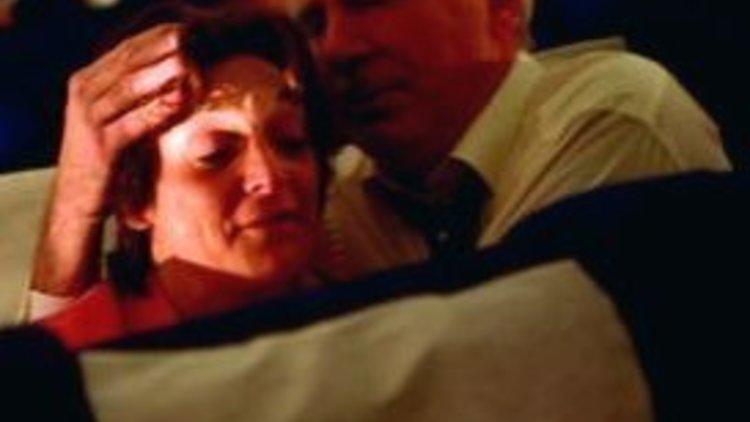
Time Out says
‘United 93’ follows, in roughly real time, the 81-minute flight that left Newark minutes before the World Trade Center was hit. In a naturalistic mode similar to the one Greengrass used for 2002’s ‘Bloody Sunday’, we see the banal chitchat of passengers and crew arriving at the airport, and the beginning of the day at FAA headquarters and several other aviation control centres, including a military base in upstate New York. (Around half the film takes place off the plane, with some ground staff playing themselves.) As news of one, and then multiple hijackings filters through, the ineffectual bewilderment of the response on the ground becomes clear. In the air, we and the four terrorists await their moment.
The on-board environment is realised with exceptional potency, the cinema transformed into an extension of the cabin through tight compositions and muscular sound design. The low, insistent score and ambient thrum of the engines have a gut impact that combines with the awful, suffusive dramatic irony to make the first half almost unwatchable, while the spatial lurches that signify the final struggle for control are truly sickening. As an exercise in immersive cinema, the film is closer to Gus Van Sant’s ‘Last Days’ or Apichatpong Weerasethakul’s ‘Tropical Malady’ than conventional narrative movies.
Yet the claustrophobic here-and-nowness that makes for such a powerful viewing experience is problematic in a film with aspirations to wider resonance. Greengrass has claimed that a close examination of flight UA93 can reveal ‘the DNA of our times’; but the ‘real’ aesthetic, however powerful, belies the fact that what we see is almost entirely conjecture, however conscientiously researched (the victims’ families were closely involved). At the same time, the self-imposed limits of space and time preclude the unravelling of the event’s genetic strands: it makes guesses about the anatomy of a murder rather than investigating its evolutionary context. We know what to expect because we know the story, not because the film proposes an argument about the forces in motion that resulted in this crisis.
When the hijack finally comes, it comes as a perverse relief – partly because we have always known that it must happen, partly because it is the sort of thing that we see on cinema screens all the time. Once the violence starts, our status as fellow-passengers is harder to maintain; faced with such a horrific, alien ordeal, we thankfully become spectators again. Not that those on board become action heroes; Greengrass is careful not to privilege any individual’s behaviour and even draws implicit, mutually humanising parallels between victims and hijackers (in their use of prayer and their hesitant, ruthless violence). Some of the rhetoric that has grown up around flight UA93 presents the storming of the cockpit as some sort of principled decision to ground the plane before it can be used as a weapon – a grand-scale version of taking a bullet for the President. Here, the fighting back is presented, entirely plausibly and sympathetically, as a last, desperate attempt to live; not self-sacrifice but self-defence.
Of course, the danger that hapless deaths will be co-opted to militaristic ends is not new. Following Horatio’s plea, Denmark’s new ruler commands: ‘Bear Hamlet like a soldier to the stage… and for his passage/The soldier’s music and the rite of war/Speak loudly for him.’ This, surely, is not what the prince’s friend had in mind. ‘United 93’ might be an insular response to a global tragedy, but – taken on its own, limited terms – it is powerful and sincere, giving reign to pity and fear without indulging jingoism or sentimentality. For that at least it deserves applause.
Release Details
- Rated:15
- Release date:Friday 1 September 2006
- Duration:111 mins
Cast and crew
- Director:Paul Greengrass
- Screenwriter:Paul Greengrass
- Cast:
- Omar Berdouni
- Khalid Abdalla
- Johnson Tsao
- Gary Commock
- Meghan Heffern
- Opal Alladin
- Polly Adams
- Christian Clemenson
Discover Time Out original video